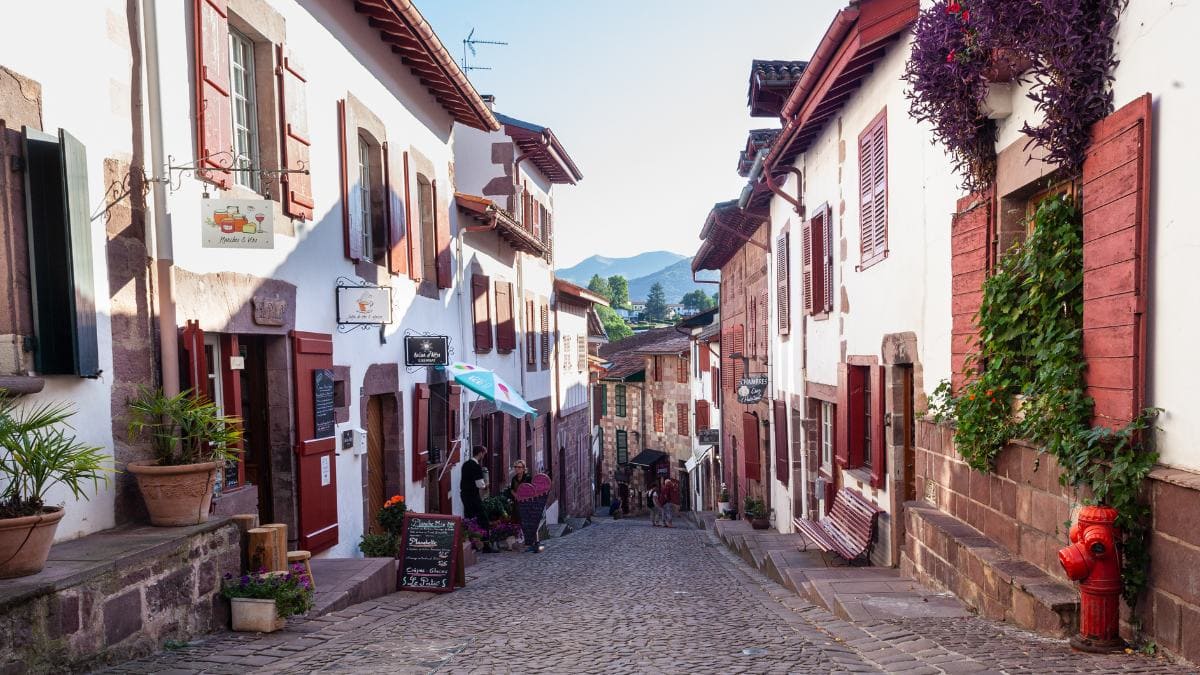Where Does the Camino Start? (10 Most Popular Starting Points)
The Camino de Santiago is more than a walking path across Spain—it’s a personal path. That said, you first begin your journey when you make the decision to go, so they say.
But then comes the big question, where does the Camino de Santiago start, anyway?
You may be surprised that there’s not just one Camino de Santiago starting point or location. The Way of St. James (Camino in English) offers multiple different starting points. Each has its own appeal and could be a good option for you depending on your available time, preferred distance, or other desires.
As for my first Camino, I chose Astorga. I simply felt that Astorga was where I was supposed to start. I had a few weeks to complete my Camino, so I began researching options. But, when I saw the castle by Gaudí, I decided that was my starting point.
In this guide, we’ll explore the most popular Camino starting points, helping you discover the starting city that resonates with you.
10 Best Camino de Santiago Starting Points
1. Sarria, Spain
Route: French Way (Camino Francés)
Distance/Duration: 116 km (72 mi) / 5-7 days
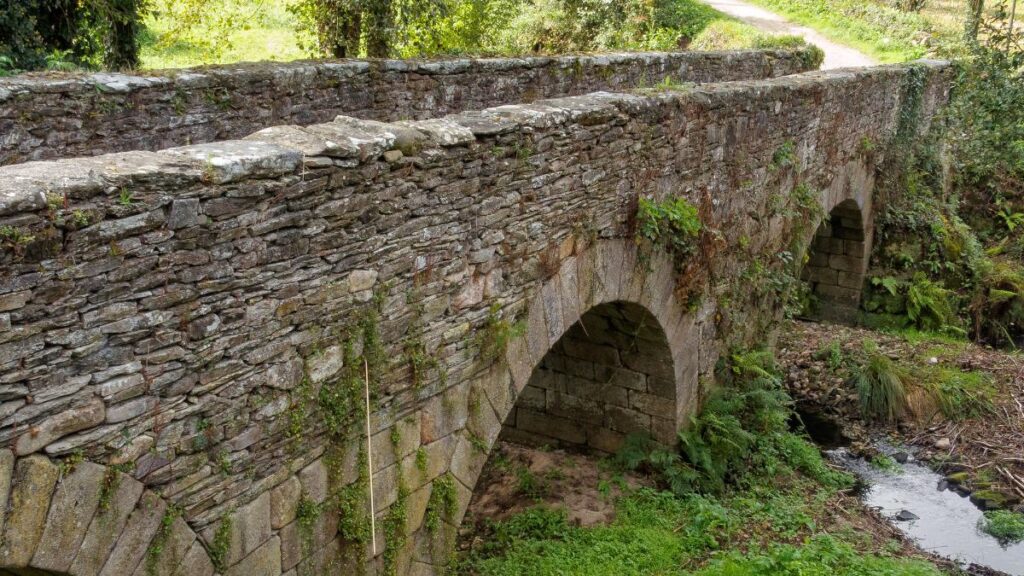
Often bustling with energy, Sarria is the go-to Camino starting point for the majority of modern pilgrims on the Camino Francés. Why? It’s simple. Sarria sits just over 100 kilometers from Santiago, making it the perfect beginning for those looking to earn the Compostela, the Caminos’s official certificate of completion.
But, Sarria offers more than just a strategic starting point. This Galician town is a melting pot of cultures and a hub of excitement. If you can, take an extra day to explore the many things to do in Sarria, including attending pilgrims’ mass for a blessing for your journey.
At your hotel or hostel, introduce yourself to fellow adventurers from all walks of life—each with their unique stories and motivations for walking the Way. You’re starting this journey together, after all.
By far the most popular Camino starting point, the journey from Sarria is often considered a condensed essence of the Camino experience. Starting there, you get the chance to walk through easy, lush landscapes and quaint villages, learning about Galician culture.
Sarria to Santiago is an ideal choice for first-timers or those with limited time, offering a perfect balance of challenge and discovery.
In sum, if you’re ready to step into the heart of the Camino with just enough challenge to make it rewarding, Sarria awaits!
2. Saint-Jean-Pied-de-Port, France
Route: French Way (Camino Francés)
Distance/Duration: 764 km (475 mi) / 33 stages on foot
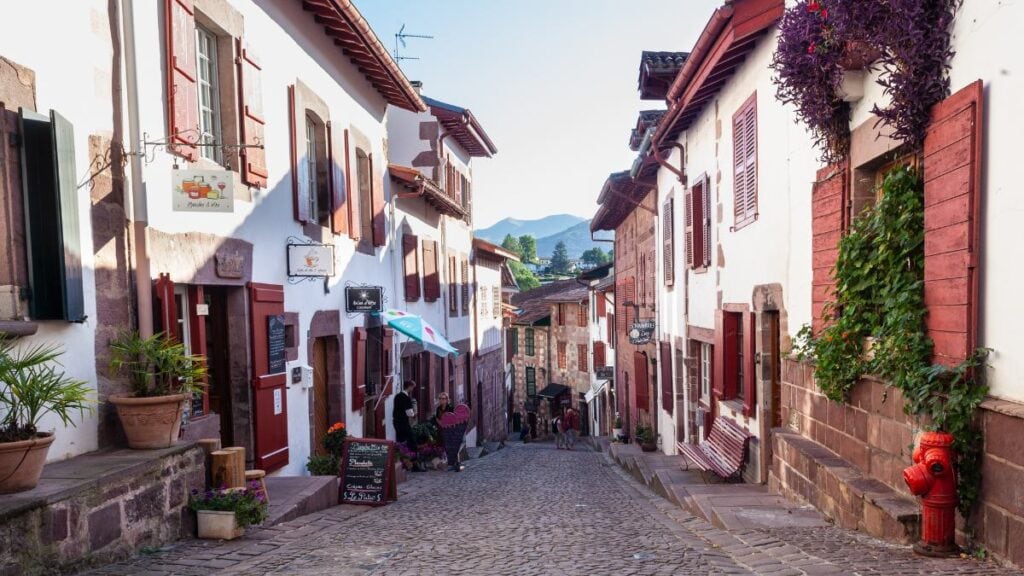
Picture this: the quaint French Pyrenees town of Saint-Jean-Pied-de-Port. It’s not just any starting point, it’s the gateway to the Camino Francés, the most popular Camino route.
Many people consider SJPP, as it’s called for short, the “true” Camino Francés starting point.
I’m not going to get into any arguments around that. But, I can tell you that SJPP is in the top three most popular starting points according to the Pilgrim’s Reception Office!
If you desire to experience the full Camino Francés, consider Saint-Jean-Pied-de-Port. Situated on the France/Spain border, it will allow you to walk the full distance across Spain in roughly one month.
Pilgrims who have walked from SJPP say the camaraderie you’ll experience starting from Saint-Jean is truly special (of course it could be argued that it’s special no matter where you start).
The first day from this Camino start point is the ultimate blend of physical challenge and breathtaking scenery, both of which will set you up for an unforgettable journey. So, get yourself to St-Jean-Pied-de-Port, lace up your boots, and take the first step!
3. Tui, Spain
Route: Portuguese Way (Camino Portugués)
Distance/Duration: 119 km (74 mi) / 5-8 days
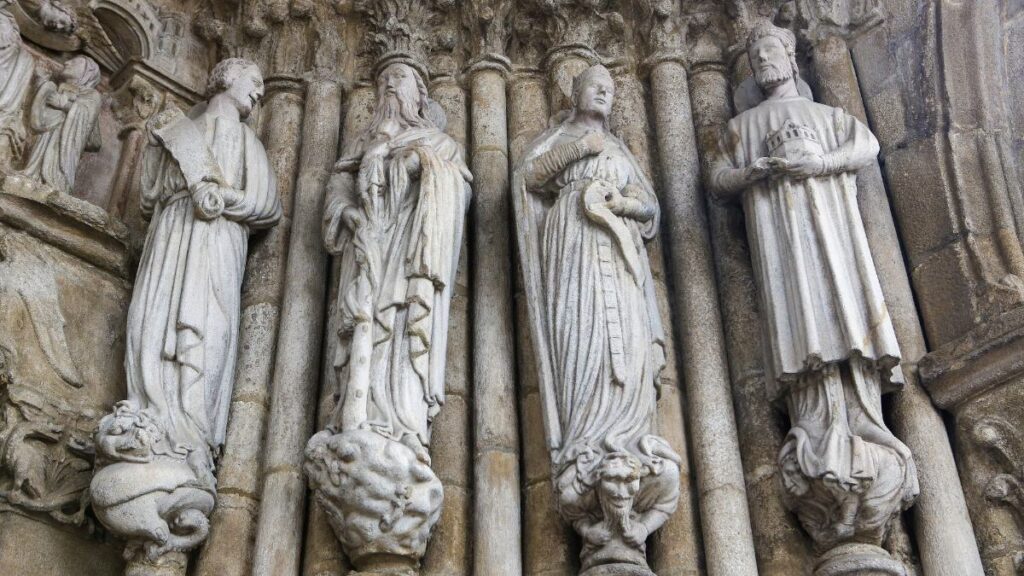
Tui is a sweet little gem perched on the Spanish-Portuguese border and a favored starting point for the Camino Portugués. This historic town, with its charming streets and ancient architecture, offers a unique blend of Portuguese and Galician influences.
More recently, Tui has emerged as one of the top starting points for pilgrims. Not only can you get the Compostela, but the route from Tui beautifully encapsulates the essence of the Camino Portugués: wind through picturesque landscapes, past tranquil rivers, and through towns brimming with heritage.
But there’s more to Tui than just being a starting point. It’s yet another invitation to slow down and savor the moment. After arriving by public transport, spend a half day here before you begin your walk. You can visit the Tui Cathedral, stroll along the Miño River, and enjoy some local cuisine.
Then, start your Camino journey fresh the next morning.
Tui is the ideal starting point if you value a culturally rich beginning to your Camino, a scenic path, and a Camino you can do in one week.
4. Porto, Portugal
Route: Portuguese Way (Camino Portugués)
Distance/Duration: 280 km (173 mi) / 12-14 days (Coastal); 260 km (162 mi) / 10 days (Central)
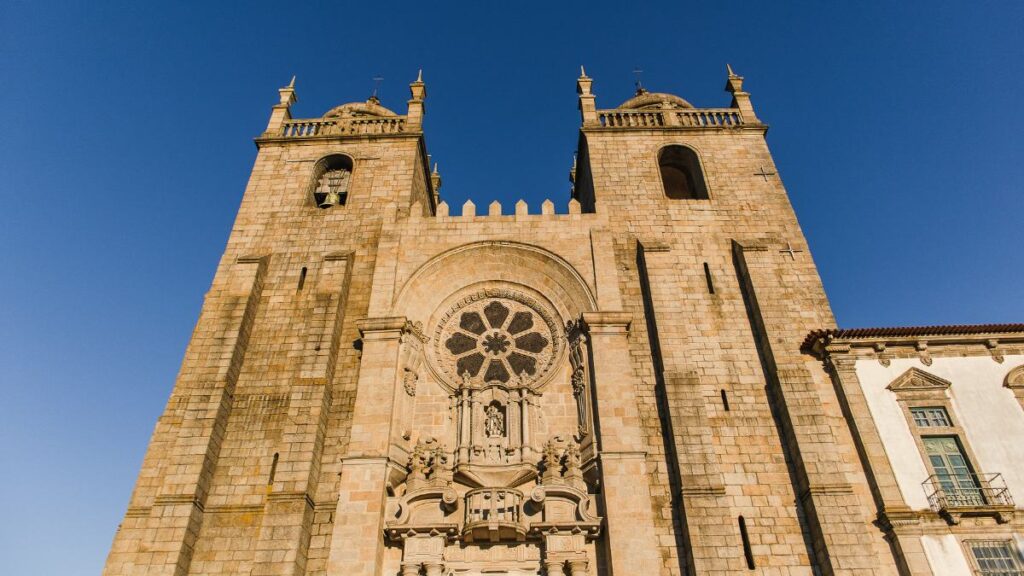
Next up is Porto, a city that’s as charismatic as it is historic, serving as a popular starting point for the Camino Portugués. Nestled along the Douro River, Porto’s charm is undeniable, from its colorful riverfront houses to its famous port wine.
Porto offers two distinct Camino routes: the scenic coastal path and the traditional inland route.
If you choose the coastal path, expect the sea breeze to accompany and the sound of waves providing a rhythmic backdrop. Of course, in colder weather, this may not be such a good thing! Overall, this route is perfect for those who relish in the allure of seaside towns.
On the other hand, the inland route from Porto weaves through vineyards and historic towns, offering a tapestry of Portugal’s rich cultural heritage. Beware though, that the first day out of Porto is rather industrial. Some choose to walk the first few stages along the coast and cut in, or start just outside of Porto.
Whichever path you choose, Porto, with it’s many things to do, sets the stage for a pleasant journey filled with diverse landscapes and cultural richness.
5. Ferrol, Spain
Route: English Way (Camino Inglés)
Distance/Duration: 116 km (72 mi) / 4-6 days
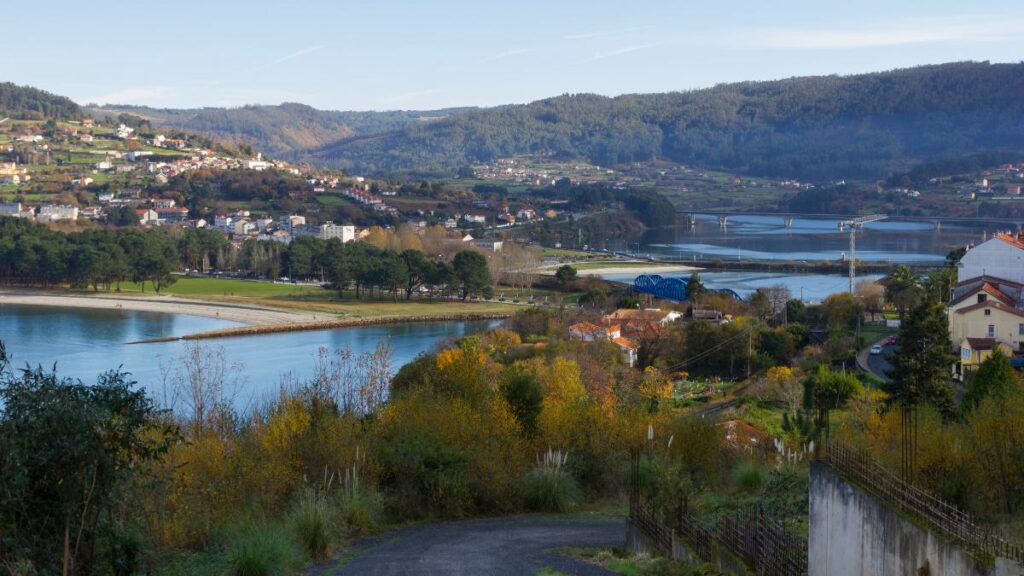
Ferrol, the starting point for the Camino Inglés, holds a unique place in Camino lore. Traditionally favored by English-speaking pilgrims arriving by sea, the Camino Inglés, this port city in Northern Spain is steeped in naval history.
Before you embark, take time to explore Ferrol’s naval museum and wander through its historic streets.
Now, the Camino Inglés offers a unique perspective from the very start. It’s rich in cultural and historical depth and takes only a few days to complete.
Plan for a blend of urban and rural Galicia, with shorter distances between stages compared to other routes. This route is ideal for those looking for a less crowded, yet equally enriching, short Camino experience. But beware, changes to the route in recent years to accommodate more pilgrims have led to more road walking over scenic paths.
If you’re intrigued by maritime history and coastal views, Ferrol is an excellent starting point. Alternately, you may begin the Camino Ingles in A Coruña.
6. Oviedo, Spain
Route: Primitive Way (Camino Primitivo)
Distance/Duration: 321 km (200 mi) / 14 days
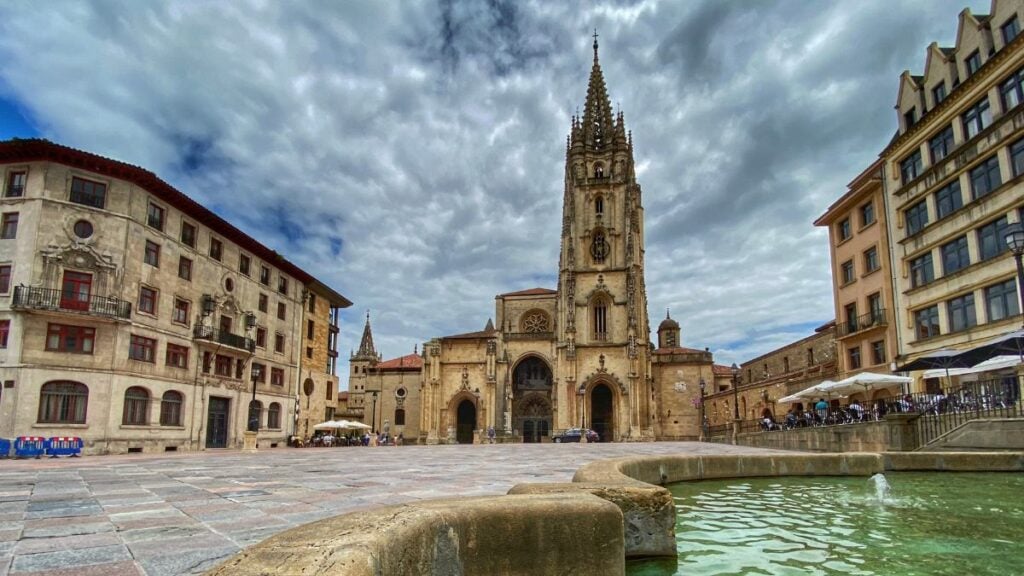
Oviedo, the starting point of the Camino Primitivo, is deeply tied to the roots of the Camino. Known as the oldest route to Santiago, the Camino Primitivo offers a path less traveled, winding through the stunning and challenging landscapes of Asturias.
Starting from Oviedo means embracing a challenging yet immensely rewarding path. It’s known for its natural beauty, traversing mountains and valleys, and offering a sense of solitude and introspection that can be harder to find on more popular routes.
I know I hear the call to start here sometime, do you?!
Oviedo itself is a city rich in history and culture, setting the stage for a challenging few weeks. Before setting off, immerse yourself in its pre-Romanesque churches and tasty culinary scene.
For those seeking a deeper connection with nature and a quieter path to Santiago, the Camino Primitivo from Oviedo is an excellent choice. A journey that challenges and inspires, it will surely lead you not just to Santiago, but also towards a deeper understanding of yourself.
7. Leon, Spain
Route: French Way (Camino Francés)
Distance/Duration: 304 km (189 mi) / 14 days
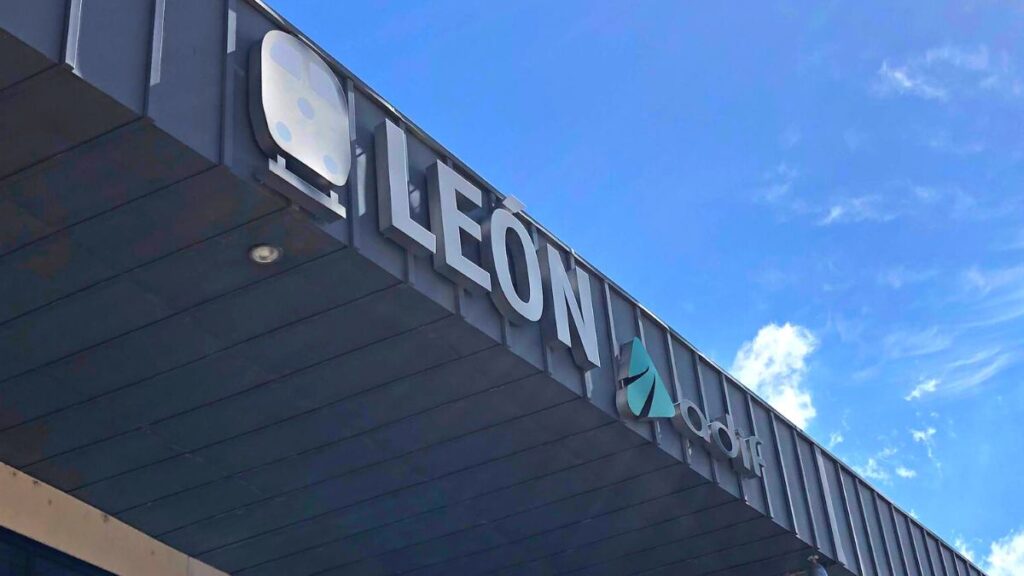
Leon is a potential starting point on the Camino Francés. However, this city isn’t just a stop along the way, it’s a city of art, history, and culture that will intrigue you even before you take your first step on the Camino.
Full of architectural marvels, Leon offers an immersive experience into Spain’s heritage. The city’s Gothic cathedral, with its stunning stained glass windows, is a must-visit. The streets of Leon are fun to explore, a mosaic of historical eras, each telling a story you’ll want to hear.
Starting your Camino from Leon means you’ll experience a significant portion of the Camino Francés without the commitment of the full route from Saint-Jean-Pied-de-Port. Ideal for those looking to dive deep into the Camino experience, yet have time constraints, it takes around 2 weeks to get to Santiago if you keep up the pace.
As you depart from Leon, you’ll carry with you not just the excitement of the journey ahead but also a love for a city that has been a pivotal part of the Camino for centuries.
8. Irún, Spain
Route: Northern Route (Camino del Norte)
Distance/Duration: 830 km (515 mi) / 33 stages
Irún, nestled at the Spain-France border, is the traditional Camino del Norte starting point. Having visited this town a few years ago, it struck me that a tiny town could have such a big impact!
For those seeking a path less traveled, the Camino del Norte from Irún is a great option. It’s a journey that takes you through lush landscapes, picturesque beaches, culturally rich towns, and cities like San Sebastian, Bilbao, and Santander.
If you’re looking for a challenging route, coastal views, and a quiet experience, consider leaving from Irún. Certainly, each step will uncover something new.
9. Sevilla, Spain
Route: Silver Route (Vía de la Plata)
Distance/Duration: 970 km (603 mi) / 36 stages on foot
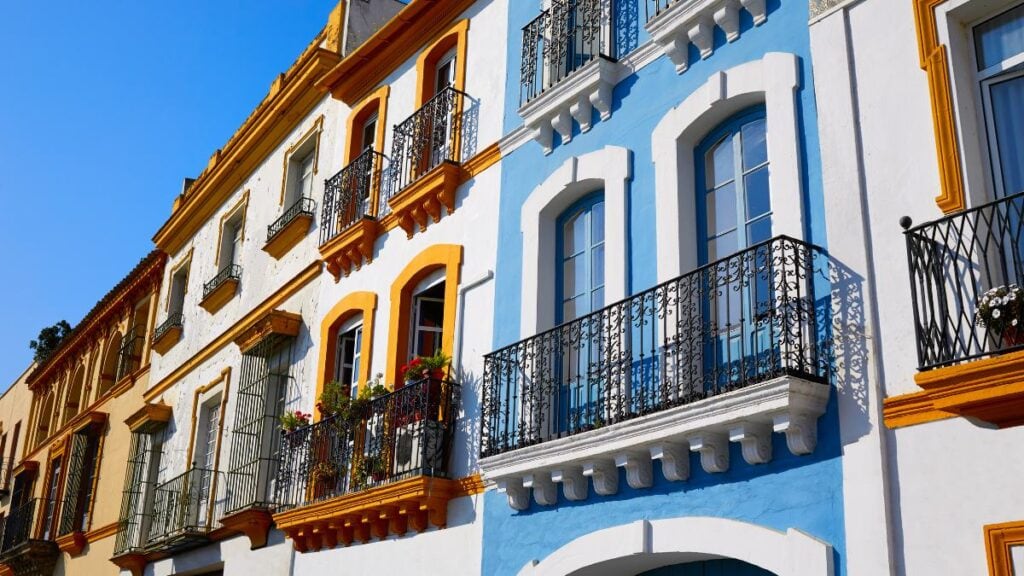
Sevilla, the heart and soul of Andalusia, marks the beginning of the Vía de la Plata. This is the longest Camino route stretching around 1,000 kilometers (~600 miles). While not many pilgrims undertake this route, those that do, start in Sevilla.
Starting your Camino in Sevilla means embarking on a solitary path, diverse in it’s landscapes, culture, weather, and cuisine as it stretches north.
It goes without saying that you must spend time in Sevilla before starting. With landmarks like the Alcázar, the Giralda bell tower, and the lively streets of Barrio Santa Cruz, it’s what many people think of when they think of Spain.
The Vía de la Plata from Sevilla is as much about exploring Spain’s varied cultural tapestry as it is about the physical journey to Santiago. That’s probably why you’ll see more seasoned pilgrims on this route.
10. Santiago de Compostela, Spain
Route: Finisterre – Muxía Way
Distance/Duration: 119 km (74 mi) / 5 stages
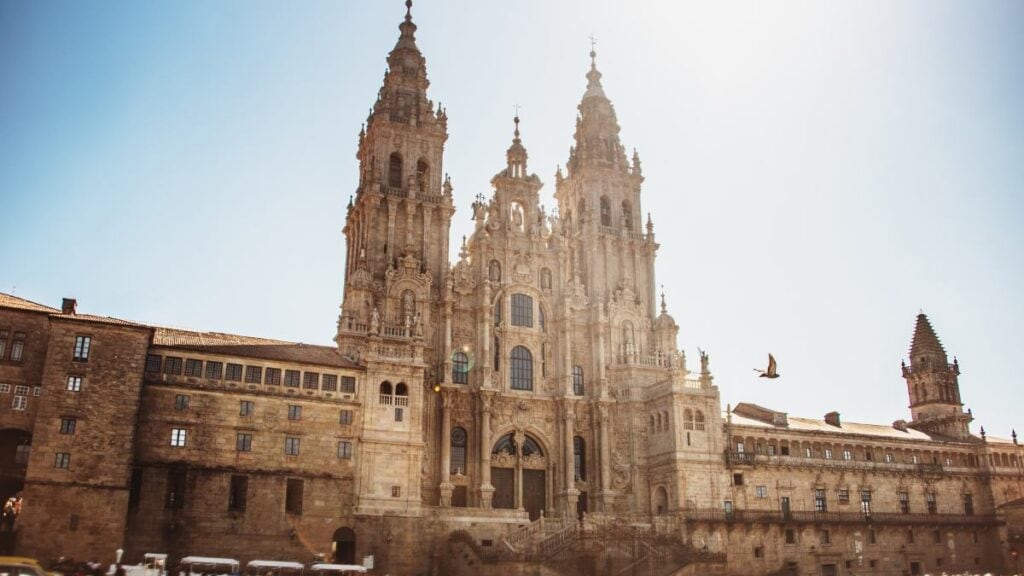
No, this isn’t a mistake! Santiago de Compostela, the end goal for most Camino pilgrims, is also a starting point for the Camino Finisterre.
This little-traveled route extends the Camino beyond Santiago, taking pilgrims to Finisterre on the Atlantic coast, once believed to be the edge of the world.
The pilgrims that do start in SJPP often desire to continue their pilgrimage to walk all the way from one end of Spain to the other. That said, many pilgrims opt for a day trip from Santiago de Compostela instead.
A somewhat challenging route, the route to Finisterre passes through the mystical landscapes of Galicia, leading to rugged coastlines.
If you reach Santiago and feel you’re journey isn’t complete, perhaps the Camino Finisterre provides a perfect epilogue?
Last Thoughts on Where to Start the Camino
As you can see, the Camino de Santiago’s starting points are as diverse as those who are fortunate to travel its roads. 💛
Whether you’re drawn to the traditional and bustling paths from Sarria, the coastal serenity of Porto, or the lesser-trodden trails, your Camino experience is yours to shape!

